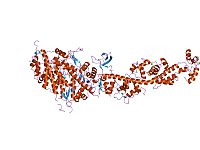
RMAN: Relational multi-head attention neural network for joint extraction of entities and relations
Sign Up to like & getrecommendations! Published in 2022 at "Applied Intelligence"
DOI: 10.1007/s10489-021-02600-2
Abstract: The task of extracting entities and relations has evolved from distributed extraction to joint extraction. The joint model overcomes the disadvantages of distributed extraction method and strengthens the information interaction between entities and relations. However,… read more here.
Keywords: extraction entities; joint extraction; attention; entities relations ... See more keywords

On the diversity of multi-head attention
Sign Up to like & getrecommendations! Published in 2021 at "Neurocomputing"
DOI: 10.1016/j.neucom.2021.04.038
Abstract: Abstract Multi-head attention is appealing for the ability to jointly attend to information from different representation subspaces at different positions. In this work, we propose two approaches to better exploit such diversity for multi-head attention,… read more here.
Keywords: attention; diversity multi; head; head attention ... See more keywords

Intelligent Bearing Fault Diagnosis Using Multi-Head Attention-Based CNN
Sign Up to like & getrecommendations! Published in 2020 at "Procedia Manufacturing"
DOI: 10.1016/j.promfg.2020.07.005
Abstract: Abstract Aiming at automatic feature extraction and fault recognition of rolling bearings, a new data-driven intelligent fault diagnosis approach using multi-head attention and convolutional neural network (CNN) is proposed. Firstly, a simple signal-to-image spatial transform… read more here.
Keywords: fault; multi head; diagnosis; bearing fault ... See more keywords

Classification of ECG using ensemble of residual CNNs with or without attention mechanism
Sign Up to like & getrecommendations! Published in 2022 at "Physiological Measurement"
DOI: 10.1088/1361-6579/ac647c
Abstract: Objective. This paper introduces a winning solution (team ISIBrno-AIMT) to the official round of PhysioNet Challenge 2021. The main goal of the challenge was a classification of ECG recordings into 26 multi-label pathological classes with… read more here.
Keywords: attention mechanism; classification; multi head; head attention ... See more keywords

LncReader: identification of dual functional long noncoding RNAs using a multi-head self-attention mechanism
Sign Up to like & getrecommendations! Published in 2022 at "Briefings in bioinformatics"
DOI: 10.1093/bib/bbac579
Abstract: Long noncoding ribonucleic acids (RNAs; LncRNAs) endowed with both protein-coding and noncoding functions are referred to as 'dual functional lncRNAs'. Recently, dual functional lncRNAs have been intensively studied and identified as involved in various fundamental… read more here.
Keywords: head self; self attention; functional lncrnas; multi head ... See more keywords

Multi-head attention-based U-Nets for predicting protein domain boundaries using 1D sequence features and 2D distance maps
Sign Up to like & getrecommendations! Published in 2022 at "BMC Bioinformatics"
DOI: 10.1101/2022.04.08.487689
Abstract: The information about the domain architecture of proteins is useful for studying protein structure and function. However, accurate prediction of protein domain boundaries (i.e., sequence regions separating two domains) from sequence remains a significant challenge.… read more here.
Keywords: multi head; sequence; domain; protein domain ... See more keywords

Multi-Head Self-Attention-Based Deep Clustering for Single-Channel Speech Separation
Sign Up to like & getrecommendations! Published in 2020 at "IEEE Access"
DOI: 10.1109/access.2020.2997871
Abstract: Turning attention to a particular speaker when many people talk simultaneously is known as the cocktail party problem. It is still a tough task that remained to be solved especially for single-channel speech separation. Inspired… read more here.
Keywords: attention; separation; deep clustering; self attention ... See more keywords

Hunt for Unseen Intrusion: Multi-Head Self-Attention Neural Detector
Sign Up to like & getrecommendations! Published in 2021 at "IEEE Access"
DOI: 10.1109/access.2021.3113124
Abstract: A network intrusion detection (NID) system plays a critical role in cybersecurity. However, the existing machine learning-based NID research has a vital issue that their experimental settings do not reflect real-world situations where unknown attacks… read more here.
Keywords: neural detector; attack; head self; multi head ... See more keywords

Enhancing Recommendation Capabilities Using Multi-Head Attention-Based Federated Knowledge Distillation
Sign Up to like & getrecommendations! Published in 2023 at "IEEE Access"
DOI: 10.1109/access.2023.3271678
Abstract: As the internet and mobile computing have advanced, recommendation algorithms are used to manage large amounts of data. However, traditional recommendation systems usually require collecting user data on a central server, which may expose user… read more here.
Keywords: multi head; federated knowledge; knowledge distillation; recommendation ... See more keywords

Acoustic Word Embedding Based on Multi-Head Attention Quadruplet Network
Sign Up to like & getrecommendations! Published in 2022 at "IEEE Signal Processing Letters"
DOI: 10.1109/lsp.2021.3129702
Abstract: Acoustic word embedding (AWE) has become a mainstream method in low-resource Query-by-Example keywords search. This letter proposes an AWE based on a multi-head attention quadruplet network, which can learn the attention weight sequence for all… read more here.
Keywords: network; multi head; acoustic word; word ... See more keywords

Aero-Engine Remaining Useful Life Estimation Based on Multi-Head Networks
Sign Up to like & getrecommendations! Published in 2022 at "IEEE Transactions on Instrumentation and Measurement"
DOI: 10.1109/tim.2022.3149094
Abstract: Data-driven aero-engine remaining useful life (RUL) estimation is a key technology to monitor engine’s degradation. However, due to the difficulties of extracting the time information from data, the accuracy of data-driven methods remains low. Aiming… read more here.
Keywords: time; multi head; engine; estimation ... See more keywords